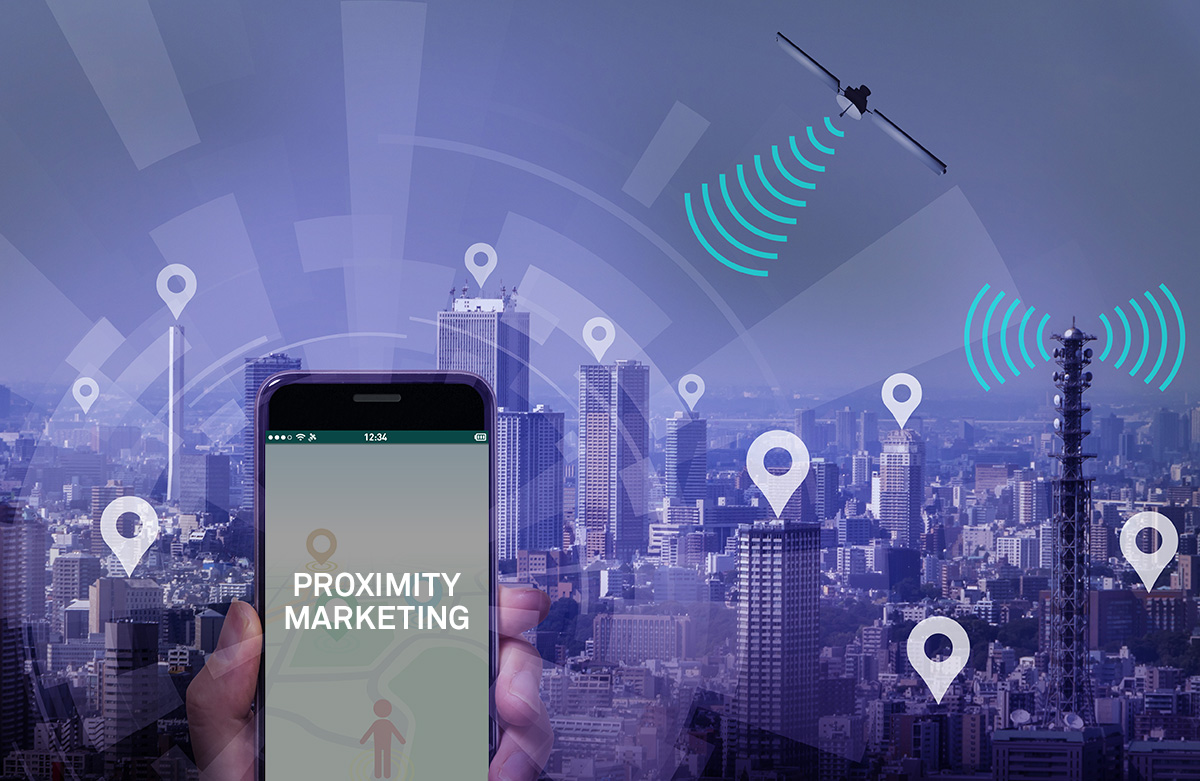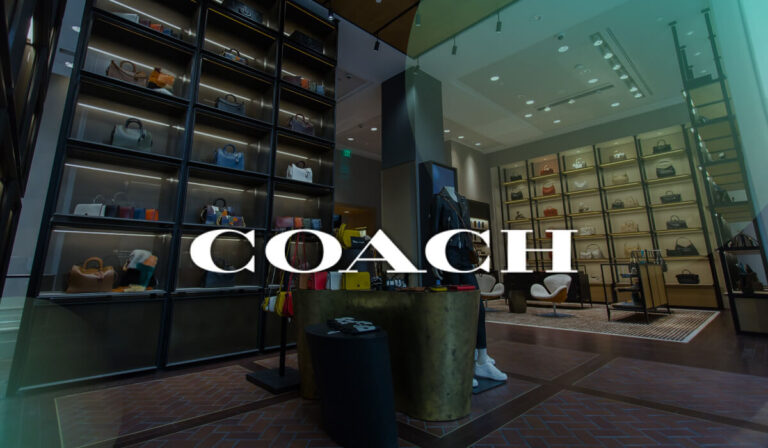With almost 5 billion mobile phone users around the world, including more than 3 billion smartphone users, there’s never been a better time to use location-based technologies in your advertising and marketing.
One of the key approaches you can try is proximity marketing. It’s a tactic that works well for businesses in all industries and of all sizes.
This guide explains what mobile proximity marketing is, who uses it, and the benefits of this type of marketing. The guide also explores the major proximity marketing solutions, answers key questions about this type of marketing, and shares examples of effective proximity advertising.
What is Proximity Marketing?
So, what is proximity advertising? Proximity marketing means using your customers’ location to market your products and services. This usually happens by using the mobile location technologies available on modern smartphones, including GPS technology, and cell phone triangulation.
WiFi and Bluetooth technology are also used to help companies serve up proximity advertising.
Proximity-based marketing is also known as hyper local marketing. That’s because it’s a highly targeted form of marketing that lets businesses show promotions to consumers within a small, local area. For example, marketers can target a neighborhood, a city block, a store, or specific areas within a store.
Using proximity marketing devices allows for fine-grained personalization of ad promotions and detailed tracking of results to make marketing and advertising campaigns even more effective.
Who Uses Proximity Marketing?
Many types of businesses use proximity-based marketing. For example, major retailers show proximity ads to potential consumers who are near their premises. If you’ve ever seen an ad for a discount coupon just as you happen to walk by Macy’s then that’s proximity-based marketing. Another example is inside a shopping mall, where you can see ads for maps and discount coupons that you can use inside the premises.
Restaurants and fast-food outlets use mobile proximity marketing to show promotions to passers-by and attract them inside. They can also show ads and coupons to existing customers to encourage them to come back, boosting repeat business.
In real estate, realtors can show ads to those in the market for new homes, rentals, or office space, depending on their location and behavior. Charitable organizations can use proximity advertising to get donations from people in particular localities.
And in the travel industry, business owners use proximity advertising to display information about events, deals, and rewards relating to particular destinations, car hire firms, accommodation, or local attractions. There are also options to use this type of hyper local marketing to market to event attendees.
Types of Proximity Marketing Solutions
Here are some of the most common proximity marketing solutions you can use for your business, including different types of proximity marketing devices:
Bluetooth Proximity Marketing
Bluetooth proximity marketing (also called beacon marketing) relies on placing battery-operated proximity marketing beacons within a given location, such as retail premises. The proximity marketing beacons send short-range signals to mobile devices via Bluetooth. When customers using your mobile app enter your store, they see promotions relevant to that location.
WiFi Proximity Marketing
Free WiFi is a big draw for customers. It keeps them in-store longer, and can even make them spend more. But those aren’t the only advantages.
If you offer free WiFi within your store, then you can use WiFi proximity marketing.
When people’s devices connect to your network as they enter the store, it’s the perfect time to show a promotion. You can also make offers as they’re about to leave. And for first-time visitors, you can ask for an email address in exchange for connectivity. That means you can also use email marketing to reach them in the future.
RFID/NFC Proximity Marketing
Near field communication (NFC) and radio-frequency identification (RFID) are two technologies built into mobile phones that can help retailers reach more customers. To use RFID/NFC proximity marketing, you’ll need to have tiny transmitters attached to the products you have for sale. For example, many stores build these transmitters into smart barcodes.
Smartphones can get information from these items. This doesn’t require a WiFi connection. Once the phone user is near to the item, information transfers wirelessly between the item and the smartphone.
As a result, these proximity marketing devices allow you to create interactive shopping, marketing and payment experiences for your customers. In addition, you can get insights into customer behavior and product sales.
GPS-Based Proximity Marketing
GPS-based proximity advertising relates to geo-targeting and geo-marketing. This type of location-based marketing uses location data to target people in particular localities.
For example, within a retail chain, stores might promote winter coats or bikinis, depending on where they’re located. GPS technology can also help you define an area within which you can run a targeted promotion.
All of these proximity marketing solutions have one thing in common. They allow you to reach your customers where they are (or where they’re about to be) with targeted promotions.
Proximity Marketing has Many Benefits
There are a number of business benefits of using proximity advertising. For example, using this type of location marketing lets you personalize the customer experience based on past, present, or future location and behavior. Since relevant marketing boosts sales, this is useful.
If you have a mobile app, using proximity advertising to deliver information and offers can increase engagement with your app, and app retention.
Mobile proximity marketing is a convenient and cost-effective way to market only to your core audience: people who are already in or near your store and can be persuaded to buy from you.
Plus, like other types of location-based marketing, proximity advertising helps marketers better understand their customers’ needs. In turn, that lets them meet those needs to improve customer relationships and engagement.
Which Customers Can You Target with Proximity Marketing?
When targeting using proximity-based marketing, anyone who owns a smartphone and is in the right area is a potential customer. People are using their smartphones more and more, with eMarketer estimating that daily usage will reach an average of 3 hours and 54 minutes by 2021.
As mentioned earlier, it’s useful to show ads to people who are already shopping or who are in a mall or large retail outlet. If you send a promotion when people are about to walk past your store, at least some of them will stop and check it out.
How Effective is Proximity Marketing?
So, how does mobile proximity marketing work in practice? Here are a couple of proximity marketing examples to show you the real results that this type of technology can bring.
Ulta Beauty used proximity targeting to raise awareness of new store openings, targeting ads to potential customers within the area. Stores supported by this technology reached their average weekly visitation targets 43% faster and 26 days earlier than non-supported stores, and were also 2.5x times more likely to reach those targets at all.
OneSight worked with GroundTruth to target eyewear users with mobile phones who had previously visited eyewear stores. The campaign had a better CTR than expected, and successfully shared the company’s message with people likely to buy. Performance was 20% above expectations.
Toyota used proximity marketing to target people most likely to buy new cars, and to encourage them to visit local dealerships. Not only did the company achieve 1,200 visits to dealerships targeted in the campaign, but there were also visits to smaller, nearby dealerships.
Outback Steakhouse used GPS proximity marketing to show ads to potential customers near key locations. The number of requests for information about dining at Outback increased by 25% and the campaign exceeded industry standards by 80%.
Coach set a target of driving 20,000 in-store visits, using proximity marketing. The company drove 76% of the visits via location targeting, and 5% by showing ads to people near their stores. The company also targeted those most likely to become customers (via audience and behavioral targeting). In the end, the campaign achieved 31,000 in-store visits, and a 16% rise in engagement.
With the mobile device user demographic growing worldwide, proximity advertising has great potential to help you reach more customers and grow both foot traffic and revenue. Learn more about how GroundTruth’s self-serve advertising platform can help you create a proximity advertising strategy.







